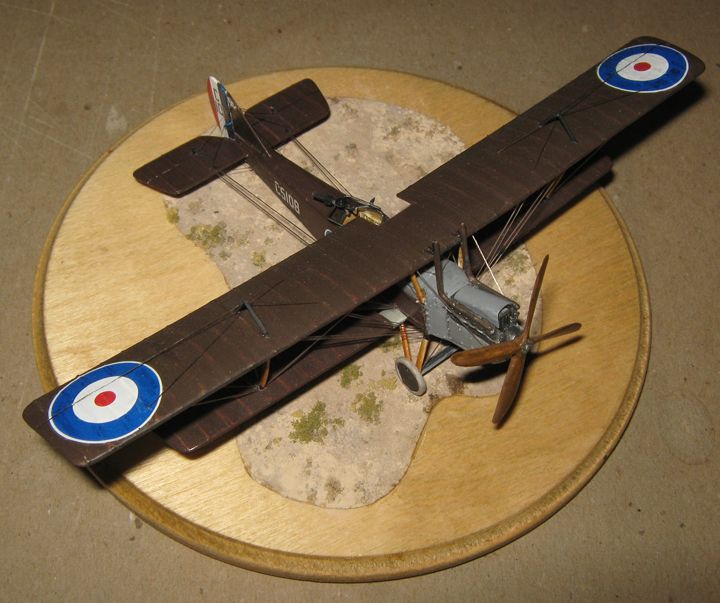
The Royal Aircraft Factory's R.E. 8, with its distinctive bent-back appearance, is one of the emblematic aeroplanes of the Great War. Dubbed 'Harry Tate' (doubtless by ground-crew versed in Cockney rhyming slang) after a popular music hall entertainer of the day, its official title was abbreviation for Reconnaissance Experimental. It was the standard English observation machine during the last year and a half of the war.
The R.E. 8 was designed as a replacement for the B.E. 2 series. The Royal Aircraft Factory and the Royal Flying Corps have come in for a great deal of criticism over the length of time the B.E. types (at bottom a pre-war design) remained in service. Had all gone well with the development and introduction of the R.E. 8, however, the B.E. types would have been retired from front-line service in the early months of 1917, rather than in early summer of that year.

Design of the type began late in 1915, simultaneous with the outcry over the 'Fokker Scourge'. Problems with development and production of the intended engine, an air-cooled 150 hp V-12 derived from the 90 hp V-8 which powered the B.E. types caused serious delays. Further difficulties appeared when the type went into squadron service first in November 1916.
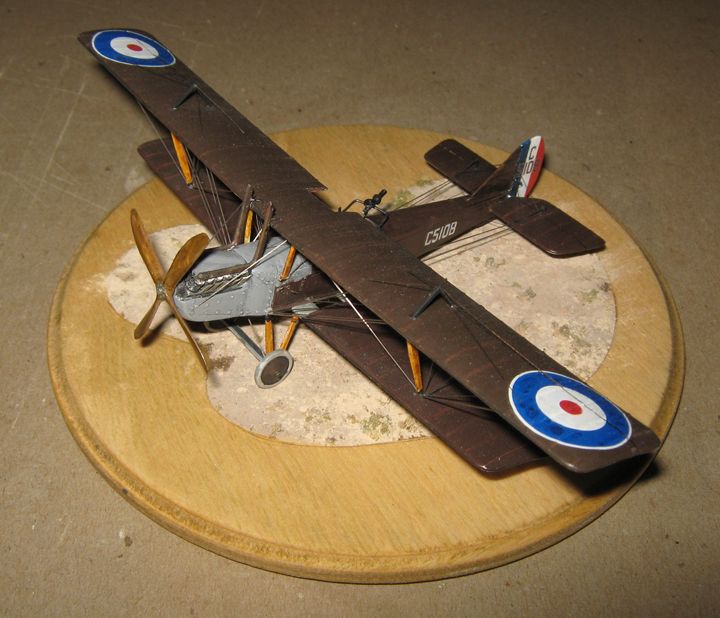
Oddly, for the product of designers who placed great value on stability in flight, and had much practiced skill in achieving it, the original R.E. 8 proved extremely prone to spinning at landing speeds, a fault which owed to inadequate vertical tail surface. Further, a new pilot's aid, a mechanism to vary the incidence of the horizontal tail-plane, was poorly understood and its misuse led to cranky handling and additional accidents. The type was withdrawn for further work in January, and did not reappear at the front till April, 1917, with a larger vertical tail surface, including good bit of fin under the fuselage. Some units, even so, went the makers one better and improvised their own even larger vertical tail surfaces, derived from late B.E. spares still on hand.
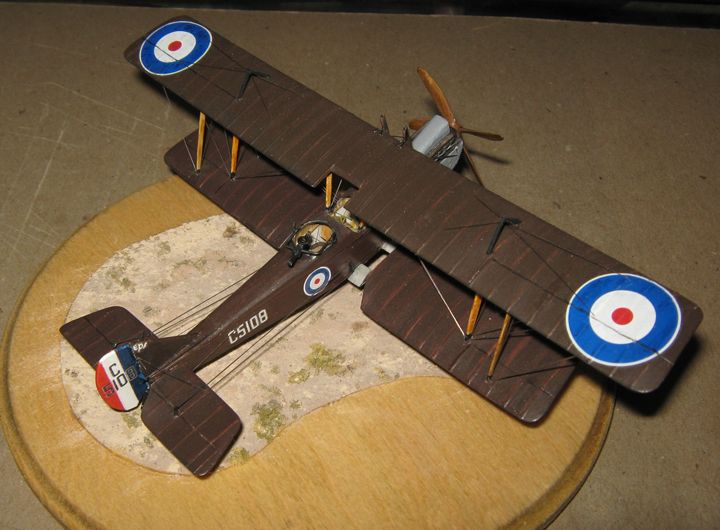
The R.E. 8 once in service, flown by pilots used to its ways, proved to be a solid improvement on its predecessor, with better speed and climb and better able to defend itself, with the pilot in the front seat and the observer in the rear, the former with an efficient synchronized Vickers and the latter with a Scarff ring and Lewis. It duties were artillery direction, photo-mapping, short range visual reconnaissance, and contact patrol during battles, all of which the machine enabled its crews to carry out efficiently and effectively.
A good portion of R.E. 8 production went not to front line usage but directly to training units. English training practices were undergoing radical reform and improvement during 1917. Routines of dual control training were much improved, pilots were trained to get out of trouble rather than avoid it, and finished off by putting in hours on the first-line combat types they would be assigned to fly when assigned to a service squadron. Observers in training got much more time aloft, and more realistic practice.
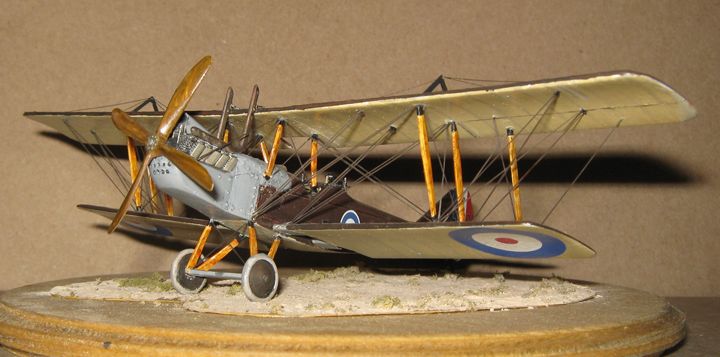
The R.E. 8 had only a short service career after the Great War ended, but it was a far-flung one. The type was employed in the early days of the 'Troubles' in Ireland, in support of Whites against Reds in both arctic Russia and Ukraine, and in Iraq and Palestine and Egypt. The Middle East became the chief focus for the Royal Air Force, where potential troubles ranged from rebellions in Iraq to frictions with France and the rising power of Gen. Kemal in Turkey. Egypt became a key point, with extensive installations. Egyptian bases had certain advantages for training aircrew. Good weather year round was one, and since so many aircrew would be serving in the Middle East, training from the start in local conditions saved time.
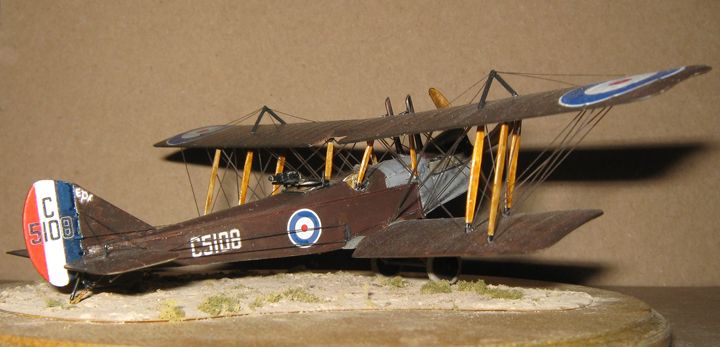
This aeroplane, C5108, was one which served in Egypt as a trainer after the Great War. It was built by Coventry Ordnance Works, and delivered to Egypt in September or October of 1918. It was uncrated and assembled by the Eastern Aircraft Factory (an RAF establishment) in March of 1919, and was assigned to 5 Fighting School. It was employed there till June, when it went in for an overhaul at X Air Depot, and was then assigned to 16 Training Depot Squadron. It was written off in September, though whether due to a crash or just because it was redundant (about that time some R.E. 8s from the same batch at Aboukir were written off still in their crates) I do not know.
The model is an Airfix 1/72 R.E. 8 kit, with corrections too extensive to describe here, but including major surgery on the fuselage and wings, and scratch-built tail surfaces, struts, and undercarriage. The build was begun almost two years ago, for the Vintage Kits group build here, and yes, I have rather missed the deadline for that. Earlier stages of the build, with full particulars of what was done by way of corrections, can be found at the two links below
http://forum.ww1aircraftmodels.com/index.php?topic=484.0http://forum.ww1aircraftmodels.com/index.php?topic=1266.0The fin is not standard, but a local variant fitted to the machine by the Eastern Aircraft Factory. The marking on the upper starboard side of the fin shows in a photograph of the machine (appearing in the windsock number on the type). I have no idea what it is. Wife made a decal to copy it as close as we could manage, and she also did the rudder stripes and serials.
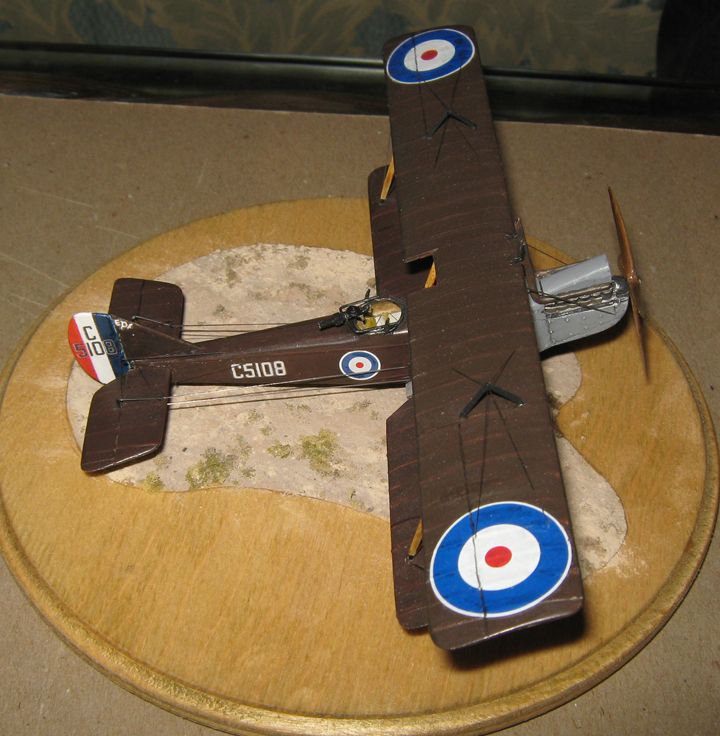
The item on the Scarff ring is not a Lewis but a camera gun, made to resemble a Lewis, employed to train observers in aerial gunnery.
The Airfix R.E. 8 is one of the oldest kits still in production, coming out first in 1957. For all its faults, Airfix deserves a lot of credit for bringing it out, and keeping it on. It is the only mainstream offering in 1/72 of a straight observation machine of the Great War.
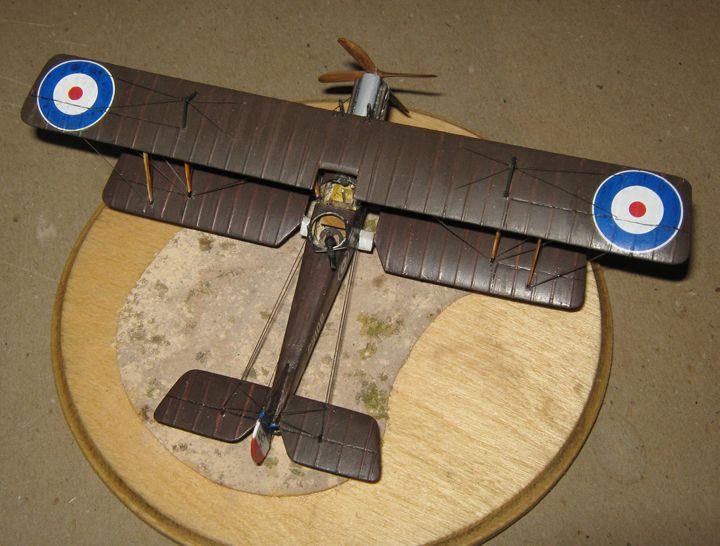
I want to thank the fellows over on The Great War Forum, for providing detailed information on the service history of this particular machine. The place is worth a visit or three for anyone with an interest in the period, in any field:
http://1914-1918.invisionzone.com/forums/index.php?act=idx